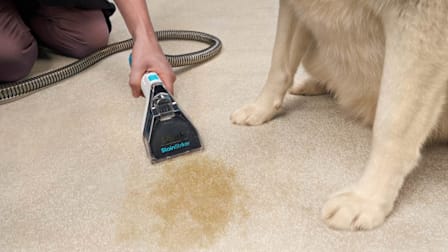How to Make Your Washer and Dryer Last Longer
A few small adjustments in your laundry room routine can go a long way in extending the life of your appliances
When you shop through retailer links on our site, we may earn affiliate commissions. 100% of the fees we collect are used to support our nonprofit mission. Learn more.

How long do you expect your washer and dryer to last? Some CR readers are frustrated, reporting that their machine needed repair within the first three years, while others are thrilled that their washer is still going strong after 28 years.
“After reading so many horror stories with the new machines, I’m okay keeping my 20-plus-year-old Frigidaire set that I have had serviced two times,” a reader once told us. “We will expire together.”
If only life were so neat and tidy.
5 Keys to a Longer-Lasting Washer
1. Keep it level. The drums on modern washers can spin up to 1,600 rpm. To keep the machine from vibrating excessively and damaging itself, the washer needs to sit dead level, feet firmly on the floor. “If your washer is unsteady, extend one foot at a time,” says Richard Handel, who runs CR’s laundry appliances test lab. “Once the washer feels stable, use a level to check it front to back and side to side, adjust as necessary, then tighten the lock nuts on the feet.”
2. Don’t overdo the detergent. A surplus of suds makes the washer work harder and could trigger extra rinse cycles, extending wash time, wasting energy, and reducing life span. Use the correct type of detergent in the amount recommended by your washer’s manual. Newer washers use a lot less water than those made 15 years ago, and high-efficiency (HE) detergents, which produce less suds, are formulated to work with water-saving front-loaders, HE top-loaders, and even certain agitator top-loaders.
3. Clean the dispenser drawer. Remove it and clean it on a routine basis. When detergent builds up in the dispenser, it can cause suds galore, making the washer work harder.
4. Try to prevent mold. It thrives when it has food and water, and washers provide plenty of both, with detergent and fabric softener residue serving as food sources. To minimize mold, run the tub-clean feature regularly—the recommended frequency varies by machine, from once a month to every 50 cycles. If your washer doesn’t have it, run an empty load on the hottest setting with a cup of bleach. When the front-loader has done its job, wipe away moisture inside the door and on the rubber gasket, and gently pull back the gasket to clean away any residue and to dry the surface. Between loads, keep a front-loader’s door ajar—as long as young children aren’t afoot—or a top-loader’s lid open. Open the dispensers to give them an opportunity to dry.
5. Inspect the water-fill hoses. Replace when cracked or brittle. If a hose bursts, the flood can damage your appliances and floor.
Best Washers From the Most Reliable Brands
A brand’s reliability and owner satisfaction for washers might vary, depending on the type of washer. Here, we feature a front-loader, two top-loaders (including a high-efficiency model), and a compact washer.
3 Keys to a Longer-Lasting Dryer
1. Clean the lint trap. It may seem obvious, but this is something to do before every load to ensure that the air flows freely. A blocked lint trap requires the dryer to run longer, adding to wear and tear on the machine.
2. Replace an accordion-style duct. Plastic or foil accordion-style ducts can sag, enabling lint to accumulate in low points and in the ridges. If lint builds up to the point where it restricts airflow, your clothes won’t dry and conditions are ripe for a dryer fire. Replace the duct with one that’s rigid metal. It has smooth walls, allowing the air to flow and reducing the buildup of lint. (If you can’t find a rigid metal duct, then a flexible metal duct should be your second choice.) To join sections of duct, use metal clamps or foil tape, instead of sheet-metal screws; the latter can catch lint and cause buildup inside the duct.
3. Keep the duct clear. Once you have the right type of duct in place, clean it at least once a year. Disconnect the duct from the dryer, then vacuum the dryer vent with a long-handled attachment. Next, use a special brush made for cleaning dryer ducts: Feed it into the duct, vacuuming up chunks of lint as you move it back and forth. “Where possible, separate the duct into shorter sections for better access,” says CR’s Handel. Reassemble and attach the duct to the dryer, ensuring that all joints in the duct are properly connected and held with clamps or foil tape.
“If you don’t feel comfortable doing it yourself, you can call a dryer vent cleaning service,” Handel says.
Best Dryers From the Most Reliable Brands
LG dominates when it comes to predicted reliability in dryers—earning an Excellent rating for electric, gas, and compact models, based on our survey data. Here, we highlight a top-scoring LG from each category.
Editor’s Note: A version of this article also appeared in the August 2019 issue of Consumer Reports magazine.
The Problem of Pet Hair
You can’t imagine life without your furry friend, but how do you deal with all that pet hair? CR expert Emilio Gonzalez shows “Consumer 101” TV show host Jack Rico how to remove the hair—and save your washing machine in the process.




















